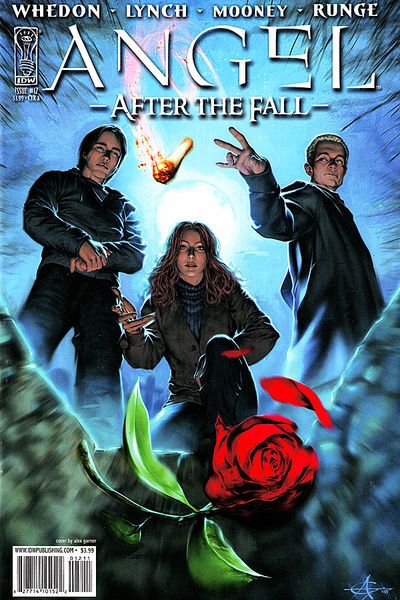While the opening six months or so of "Angel" were an often-confusing muddle wherein Lynch attempted to drip-feed readers the new status quo, the current arc of Angel is finally realizing the potential the series has always had. With the world now fully established, Lynch finally puts the focus on the characters within it, at last recovering the flavor of the TV series in the process.
A large part of the appeal of this arc has come from the deconstruction of the newly-vampiric Gunn, whose motivations and internal conflict have been finely explained in a way consistent with both his Televisual personality and his newly demonic side. Gunn's current actions are as tragic as they are understandable, and if there's any down side, it's that after this much development, Gunn might actually be a more compelling character than Angel.
While the story as a whole has featured Gunn quite heavily of late, this issue has a much more pronounced role for Angel personally, perhaps more so than any previous part of the series. The return of yet another old friend from the TV series is, unlike certain other visitations, appropriate for the plot, and doesn't come across solely a nod to the fans as previous appearances have felt like (Kate Lockley, I'm looking at you.)
The series has been fairly good at delivering big revelations at regular intervals, and the vision Wesley passes to Angel in this issue is bound to go down as a defining moment. While its origins are dubious, the fact that it convinces Angel to essentially give up the fight means that it must be convincing enough for him, at least, and as a result it may well end up becoming a driving part of his personal arc in this series and beyond.
Mooney's artwork does evoke the design of the series and characters much more than original artist Franco Urrus, though this is partly at the cost of storytelling clarity. Some pages are a little hard to follow and the components often feel like discontinuous snapshots of action rather than truly sequential panels. It's not massively damaging to the series, but it is noticeable and distracting, for instance, when Spike appears unexpectedly behind Gwen, seconds after he was shown standing in front of her. Nick Runge's two-page spread of Angel towards the end is impressive, but in its own way serves to highlights other artistic flaws on the title.
As a hardcore Buffyverse fan, it's heartening to see the series improving as it continues. If future issues are of similar quality, then when the Season Six arc finishes and the series becomes "Angel: Aftermath" with #17, readers might actually be likely to stick around -- something which, in the series earlier days, was not all that certain.

